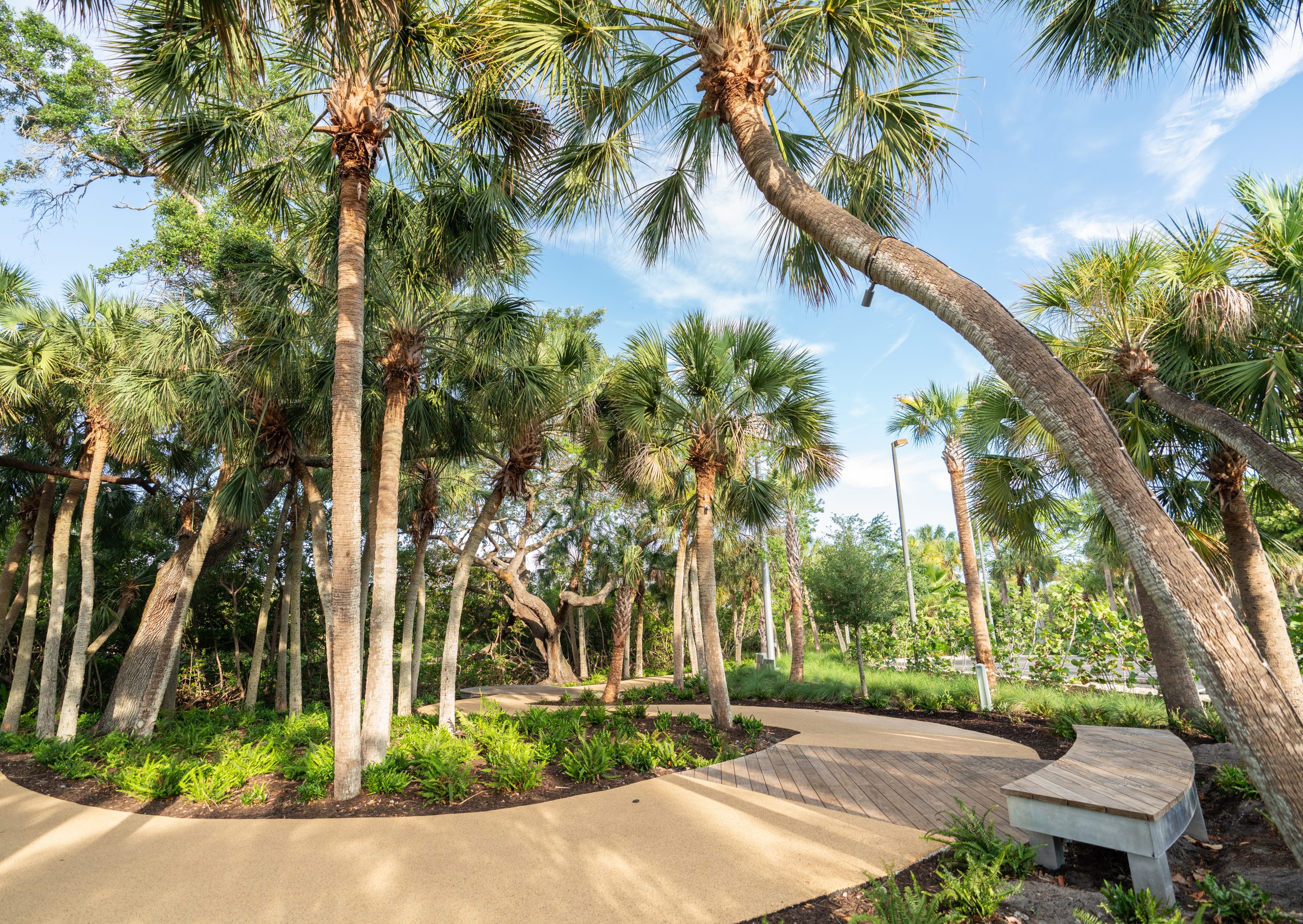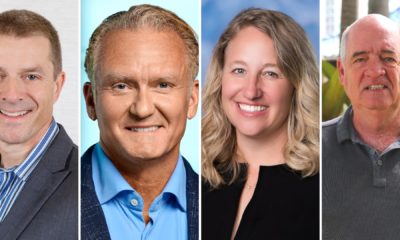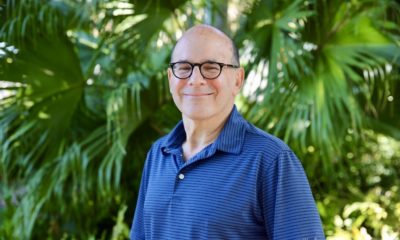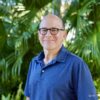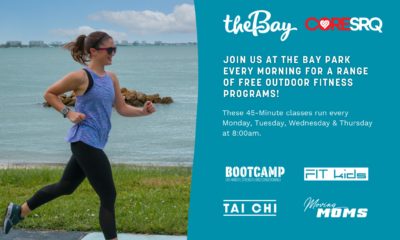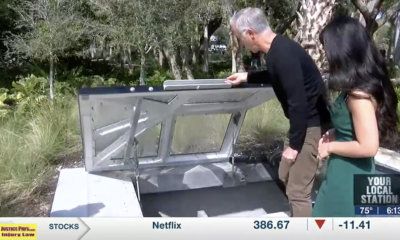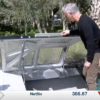Press
The Bay Park could be defining feature of Sarasota when complete, first phase moving along
The original article by Derek Gilliam appeared in the Sarasota Herald Tribune on September 12, 2021
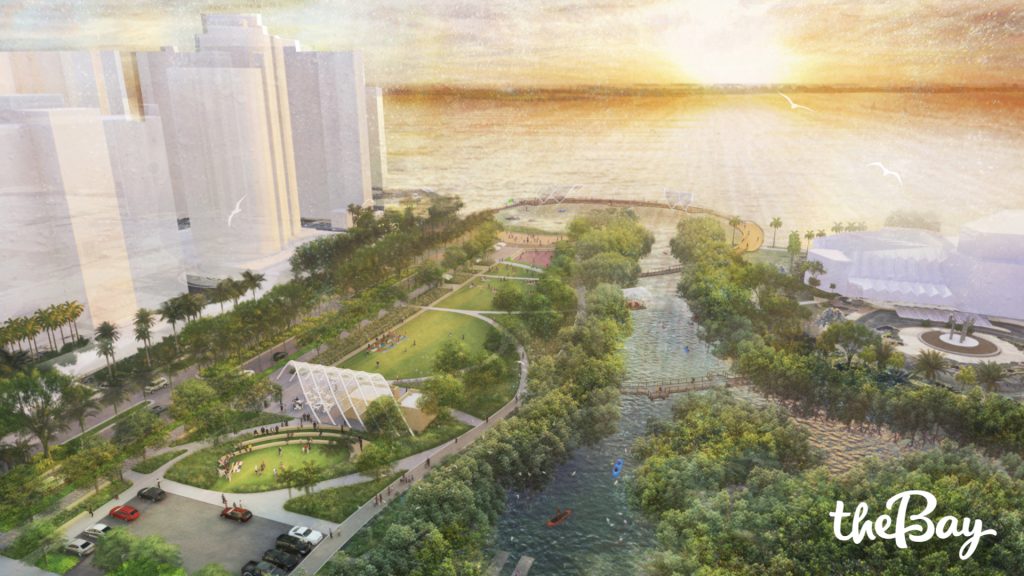
When Jon Thaxton closes his eyes and thinks about the 53 acres along Sarasota Bay being transformed into a landmark green space for the region, he doesn’t see 10 or 15 years down the road when The Bay Park should be nearly complete.
He envisions 100 years into the future, with families enjoying a bayfront breeze in one of the last natural sanctuaries left in the area.
“It’s hard for me to imagine what the rest of Sarasota will look like,” said Thaxton, senior vice president at Gulf Coast Community Foundation. “But I can see The Bay.”
The more than $100 million dollar project to take city-owned property – mostly a concrete parking lot – and turn it into a “blue-green oasis” in downtown has been a long time in the making.
When completed, The Bay Park, as its advocates see it, will be a permanent fixture on Sarasota Bay for everyone to use and enjoy, and a key reason for Sarasota joining the upper echelon of mid-sized cities in the country.
Several consultant-produced studies focused on that general area’s potential future gathered dust on City Hall shelves before the current effort to remake it got off the ground roughly eight years ago.
The spark: a Greater Sarasota Chamber of Commerce trip to Nashville, Tennessee, where Thaxton and then-chairman of Visit Sarasota County, Michael Klauber, saw that city’s redevelopment effort for The Gulch late in 2013.
That project was transforming Nashville’s defunct railyard, a former 110-acre industrial area, into a hip and revitalized commercial and residential sector of the Music City.
“If they did that with an industrial ditch, what can we do with our bay?” he asked at the time.
A search of property records showed the city of Sarasota owned a large swath of bayfront land being used as a parking lot for the Van Wezel Performing Arts Hall.
Then came the first fundraiser in Klauber’s wine cellar at Michael’s on East for a local version of a major redevelopment.
With only words and an enlarged photo of the property, a group of about two dozen people raised $250,000 for what became Bayfront 20:20, an effort to develop a vision for the site, and ultimately, The Bay Park.
Selling a vision
It may now sound like an easy sell as the first phase of The Bay has raised more than $22 million over the past two years mostly from private donations during a pandemic, but it was not.
First there’s the dollar figure of $100 million for a public park, an eye-popping figure for any public project. When people add a potential new performing arts center on the property, that number grows even more eyepopping, possibly being several hundred million dollars.
A search of property records showed the city of Sarasota owned a large swath of bayfront land being used as a parking lot for the Van Wezel Performing Arts Hall.
Then came the first fundraiser in Klauber’s wine cellar at Michael’s on East for a local version of a major redevelopment.
With only words and an enlarged photo of the property, a group of about two dozen people raised $250,000 for what became Bayfront 20:20, an effort to develop a vision for the site, and ultimately, The Bay Park.
Selling a vision
It may now sound like an easy sell as the first phase of The Bay has raised more than $22 million over the past two years mostly from private donations during a pandemic, but it was not.
First there’s the dollar figure of $100 million for a public park, an eye-popping figure for any public project. When people add a potential new performing arts center on the property, that number grows even more eyepopping, possibly being several hundred million dollars.
“People thought we were nuts,” Thaxton said. “… Michael was very naïve and thank god he was.”
Klauber said he and president of Visit Sarasota County, Virginia Haley, started meeting with anyone who would sit down with them, leading to more than 400 meetings over the years with neighborhood associations, private and community foundations and government leaders.
Part of the reason city officials liked the idea was the plan called for the first phase to be largely funded through the private sector.
City Manager Marlon Brown remembers having lunch with Klauber and Haley sometime after the Nashville trip.
“That’s what excited me,” he said. “They weren’t relying on us to do the heavy lifting.”
Most parks, rightly so since they are owned by the public, are funded by government.
But the group behind The Bay Park envisioned the first phase being 80% funded by private means and only 20% by government funds and grants.
The Bay project will receive a total of $3 million from the city in $1 million yearly installments, but the vast majority of capital for the first phase encompassing the first 10 acres of park came from private donations.
Bill Waddill, the chief implementation officer at The Bay Park Conservancy, joined The Bay project in 2018 and has largely become the public face of the project through update videos on the organization’s website.
A 10-foot-wide, half-mile walkway circling that 10 acres opened in April, giving the community the first taste of what’s to come from The Bay Park.
Part of the appeal of the project for Waddill is the environmental improvement aspect of the project.
For years, storm water has fallen around and on the 53 acres, then run across the pavement and sloshed pollutants into Sarasota Bay.
He said 72 million gallons per year of untreated water flows from the surrounding area and into the bay. When done, most, if not all, of this water will be treated in some way from improvements at The Bay Park.
What The Bay officials have termed the Mangrove Bayou has restored and enhanced the natural shoreline along part of the walkway that will help trap many of the pollutants from getting into the bay using native vegetation.
There’s also been substantial investment in storm water management improvements, including installing baffle boxes to treat storm water before it leaves the property.
“We’ve spent about as much money under the ground as we have on top of the ground for the park to do the right thing from an environmental standpoint,” he said.
In early September, The Bay officials began dredging polluted silt from the bayou after removing a section of a bridge that will reopen later this fall.
“By dredging that out we will return tidal flow and there’s no seagrass living in there, so we expect that sea grass will start to populate,” Waddill said.
Another roughly five acres is under construction that will see a large lawn, a concession area, restrooms, an iconic shade structure, a playground and small beach area constructed adjacent to the Mangrove Bayou.
This section of The Bay should open next summer.
In late July, The Bay officials applied for a federal permit to build a 400-foot, circular pedestrian boardwalk that will extend over Sarasota Bay. Those permits can take 12 to 18 months to be approved.
But Waddill said it’s important that as each part of phase one is completed, it’s opened and people start to see the benefit of the project.
“Momentum is really important to us so we try and open up pieces of it so people can use it,” he said.
Signature, world-class park
A.G. Lafley, founding CEO of The Bay Park Conservancy, has been involved in many large projects throughout his career. First in the private sector as the CEO of Procter & Gamble and later in a redevelopment effort of Cincinnati’s downtown area through a public-private partnership.
The Bay Park Conservancy is the nonprofit organization created to partner with the city to design, develop and manage the 53-acre park. It was created in January 2019.
Lafley has lived in Sarasota since 2004 and plans to spend longer in this city than anywhere he’s lived before.
One reason he got involved with the project is because it will provide access for everyone in the region to Sarasota’s waterfront, no mater income level.
He sees parks much the same way that Thaxton sees them, pointing to parks in Paris and London that date back hundreds of years and some in Asia that are more than a thousand years old.
“If you build and manage a great park, a signature park, a world class park, it is an incredible gift to the public, free open and lots of things there that people want to do and they last forever,” he said. “We are going to transform a parking lot into a world-class park that’s open to and accessible – free and welcoming – to the full and rich diversity of Sarasota, right now and for generations to come.”
Lafley has worked on several startups, including Snapchat, and thinks The Bay Park Conservancy is the most unique one he’s seen where he played a role.
At the moment, the conservancy has three full time employees, including Lafley who takes a token paycheck of $1 per year for his services.
“All we care about is that we create and operate a world class park that meets the needs and desires of our community,” he said.
While the majority of the initial funding for the project has been from private donations, the city and county officials agreed earlier this year to create a special taxing district that will last for 30 years to fund parts of the project.
The increase in taxable value of properties surrounding The Bay Park will be put into a fund that must be used on The Bay Project or construction of a preforming arts center, which is envisioned to be located on The Bay Park.
That taxing district is expected to generate between $100 million to $200 million over its lifetime, with roughly half going to fund capital improvements on the park and the other half being allocated to the performing arts center, Waddill said.
Mayor Hagen Brody chaired the first meeting of the board that will monitor the fund that taxing district creates. That board is made up of two city commissioners, two county commissioners and a citizen appointee.
Brody said the citizen member has yet to be chosen, but anyone interested can apply for the position.
Already, that taxing district has generated more than $700,000 in funds that will be deposited into an account before the end of December, according to minutes from the April meeting.
While noting the special taxing district doesn’t increase taxes, Brody said he’s been a supporter of the project since he heard about it, particularly that it will provide access for everyone to the water.
“If anything, COVID has taught us these spaces are so important to get outside and enjoy each other’s company.”
City Commissioner Jen Ahearn-Koch remembers her first sit down chat about The Bay Park well before she won election to the City Commission.
“It is an incredible example of what can happen when we come together,” she said of the effort to build the park.
Defining asset
Debra Jacobs, president and CEO of The Patterson Foundation, has also supported the project since its beginning steps years ago.
Part of The Patterson Foundation’s support has come through matching grants of $1 million attached to deadlines for a total of $5 million donated in the first $20 million raised from private donations.
Matching donations were used to leverage more money from other public donors, she said.
After The Bay Park hit $20 million in public donations a few months ago, The Patterson Foundation recommitted to the project another $4 million tied to $5 million milestones.
In total, The Patterson Foundation will have donated $9 million to the project if the goal of another $20 million is raised by the end of 2023.
“Every donor dollar mattered, a lot of peoplegaveto the $20 million,” she said. “Anybody can be a contributor and feel they helped make this bay park a reality.”
Thaxton, who no longer has a direct role in The Bay Park, said he feels the success of the project cannot be tied to any one person since the project at this point is community driven.
“The Bay Park will be the defining asset of Sarasota,” he said. “You won’t see a postcard of Sarasota without it when it’s finished.”


